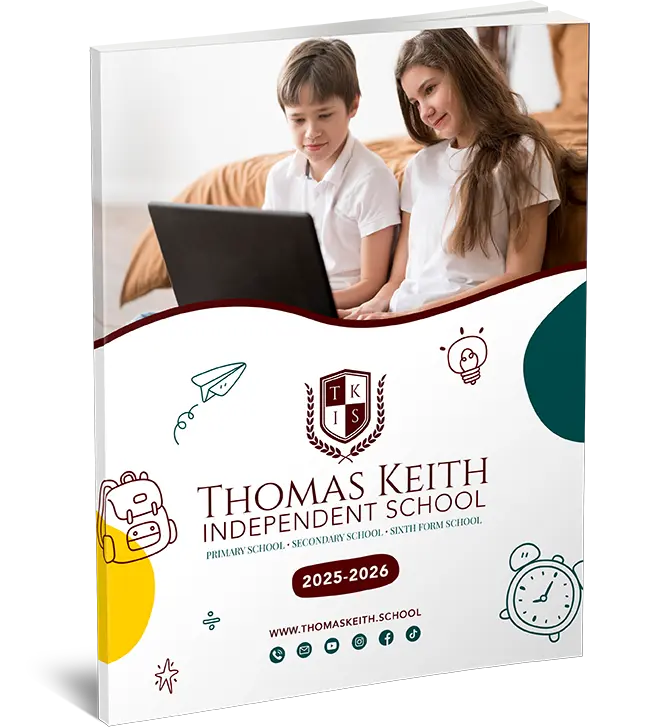
Year 1 Reading Comprehension
Reading Comprehension In Year 1
A child’s academic journey begins in Year 1 when reading comprehension is a foundational component of schooling. Reading for Year 1 at this early age focuses on developing a child’s capacity to comprehend, interpret, and enjoy what they read rather than just teaching them how to recognize words. Key elements of Year 1 reading comprehension will be covered in this article, along with techniques, materials, and examples, like those provided by Thomas Keith Online Independent School. Frequently asked questions concerning assisting young readers at this crucial juncture will also be addressed.
Overview of First-Year Reading Comprehension
In Year 1, reading comprehension signifies a child’s shift from early learning exercises like phonics to comprehending the meaning of words and sentences. With tools and tactics catered to each child’s speed, parents and teachers can help develop these abilities. Year 1 students can become confident, curious readers and make impressive progress in reading comprehension with the correct help.
The Value of Reading Comprehension in Year 1
Students in Year 1 need to be able to read comprehension because it helps them:
Improve your language and vocabulary.
Gain expertise in problem-solving and critical thinking.
Develop empathy by learning about characters and viewpoints.
Create a solid basis for academic success in every topic.
Regular reading and comprehension exercises help kids build the ability to interact with and appreciate tales, which is crucial for learning throughout their lives.
Techniques for Reading Comprehension in Year 1
In Year 1, a variety of techniques are employed to enhance comprehension. These techniques seek to guarantee that youngsters thoroughly comprehend the content and make reading interesting. Here are a few crucial strategies:
-
Decoding and Phonics Proficiency
Year 1 students can decode unknown words with a solid phonics foundation. They can sound out words and comprehend their meanings thanks to phonics, which teaches them the correspondence between letters and sounds. A lot of institutions, including the Thomas Keith Online Independent School, place a strong focus on phonics as the foundation for Year 1 reading instruction so that kids can read and recognize new words with assurance.
-
Forecasting and Deduction
To encourage children to actively interact with the text, ask them to make predictions based on the title, cover, or drawings. Year 1 students benefit from prediction tasks as they start to build their inference skills and anticipate the story’s events. Before reading a bear story, for example, kids may assume that the bear will embark on an adventure. Curiosity is piqued and comprehension is enhanced by this exercise.
-
Inquiring to Gain a Better Knowledge
Inquiring both during and after reading encourages Year 1 students to reflect more thoroughly on the narrative. Parents and teachers can pose queries such as “What do you think will happen next?” or “Why did the character feel sad?” Children benefit from this participatory reading method by being able to relate to the story, retain specifics, and comprehend underlying concepts.
-
A Synopsis of the Narrative
Children who summarize are encouraged to remember significant details from a story and provide an explanation in their own words. Beginning with basic summaries, first-year students can concentrate on the beginning, middle, and end of a story. This activity helps kids retain the key concepts and order of occurrences, which strengthens comprehension.
-
Graphics and Visual Aids
For first-year comprehension, illustrations are crucial. Young readers can better comprehend and follow the plot with the use of visual aids like story maps and illustrations. Rich visuals in many Year 1 books enhance the text and help kids make the connection between words and pictures.
For instance, the methodology of Thomas Keith Online Independent School
For Year 1 reading comprehension, Thomas Keith Online Independent School provides a flexible, kid-centred approach. They incorporate interactive and educational comprehension games, story-based exercises, and phonics into their curriculum. Thomas Keith assists Year 1 students in developing fundamental literacy abilities on their own by fusing conventional reading techniques with online resources.
![]()
Engaging Reading Session
Live reading sessions in Thomas Keith’s Year 1 curriculum allow kids to interact with peers and teachers, discuss books, and ask questions. Through this interactive setting, first-year students are encouraged to express their ideas, improving their communication and comprehension abilities.
Personalized Lesson Plans
Since every kid learns differently, Thomas Keith Online Independent School provides individualized lesson plans that change to meet the needs of each student. With this method, Year 1 students can improve their comprehension abilities at a comfortable rate and advance organically as their reading confidence grows.
Key Materials for First-Year Reading Comprehension
There are numerous resources available to help first-graders with their comprehension journey. The following are some useful tools:
-
Children’s books and short stories
For young readers, books with straightforward plots and vibrant graphics are great. Titles such as “We’re Going on a Bear Hunt” by Michael Rosen or “The Very Hungry Caterpillar” by Eric Carle inspire youngsters to engage with the story both orally and visually.
-
Understanding Exercises
Year 1 comprehension worksheets support the reinforcement of reading session lessons. These can include activities that make comprehension enjoyable and interesting, like matching, sketching tale parts, and filling in the blanks.
-
Apps and Online Resources for Education
For first-graders, interactive reading experiences are offered by apps like Teach Your Monster to Read and Epic!, which offer stories and exercises that can be adjusted to suit varying reading levels. Numerous online resources, such as Thomas Keith Online Independent School, provide virtual classrooms where first-graders can discuss stories with one another.
-
Reading Exercises and Games
Flashcard matching, phrase construction, and story sequencing are some of the games that give first-graders a fun way to develop understanding. Recall is enhanced and a favorable link with reading is created through these activities.

Parental Advice for Enhancing First-Year Comprehension
A parent’s involvement in their child’s reading development is vital. The following useful advice will help you help your first-graders with their reading comprehension at home:
1. Establish a Reading Routine
Establishing a dedicated reading time each day promotes regular practice. Children benefit from a reading habit that makes them anticipate this particular time, whether it is before bed or on a calm afternoon.
-
Talk about the narrative together.
Spend a few minutes discussing the narrative after you’ve finished reading it. Inquire about the plot, characters, and setting to help your child understand and to get them to consider the story.
-
Promote Inquiry
Asking questions demonstrates to kids that reading is about more than just following words on a page; it’s about exploring concepts. It’s also easier to comprehend their viewpoint and clear up any misunderstandings if you pay attention to their queries.
-
Apply Reinforcement
Whether it’s finishing a new book or comprehending a challenging section, acknowledge your child’s reading accomplishments. They gain confidence and are inspired to keep moving forward when they receive positive encouragement.
-
Look Through a Range of Books
Introducing children to a variety of genres, including fantasy, adventure, and non-fiction, exposes them to a range of linguistic styles and subjects. Their vocabulary can grow and their comprehension of many subjects can be expanded with a variety of reading resources.
![]()
Year 1 Reading Comprehension Difficulties
Reading comprehension in the first year can be difficult at times, especially for kids who have phonics or focus problems. The following are some typical problems and solutions:
Phonics Difficulty: Decoding words might be difficult for certain kids who struggle with phonics. Frequent games and phonics practice can aid in the progressive development of this ability.
Limited Vocabulary: Students in their first year may have trouble understanding if they don’t have enough words. They can organically increase their vocabulary by being introduced to new terms through storytelling and everyday discussions.
Short Attention Span: Reading sessions should be brief and engaging because first-graders frequently have short attention spans. To keep them interested, interject questions and make predictions throughout the narrative.
Conclusion
One of the most important skills that lays the groundwork for future academic achievement is reading comprehension in year one. With the correct tools, guidance, and techniques, first-graders can acquire the abilities needed to appreciate reading and comprehending stories. Individualized teaching methods that adjust to each child’s learning style are provided by institutions such as Thomas Keith Online Independent School, encouraging a love of reading in young children.
FAQs
Q1: What are some recommended books for first-year students studying comprehension?
A few well-liked books are Room on the Broom and Julia Donaldson’s The Gruffalo. These books’ clear language, captivating narratives, and striking graphics aid with understanding.
Q2: How much time should be spent reading in Year 1?
Aim for roughly ten to fifteen minutes each day, particularly if the youngster struggles with sustained focus. As students gain confidence in reading, gradually extend the time.
Q3: Can online courses be used to teach reading comprehension?
A: Virtual classrooms are offered by online schools such as Thomas Keith, where first-graders can communicate with their teachers and peers in real-time and take part in interactive reading sessions.
Q4: What if my child has phonological difficulties?
A: Work your way up from simple phonics drills. Get out materials centred around phonics or get advice from an educator on how to improve this ability.
Q5: Do comprehension exercises work well for first-graders?
A worksheet gives kids a systematic way to practice what they’ve learned, therefore yes, it reinforces learning. They are especially helpful for vocabulary practice and story element review.
Children in Year 1 can acquire strong reading comprehension abilities and lay the groundwork for a lifelong love of reading and learning with the help of encouraging techniques, interesting materials, and a regular reading schedule.







